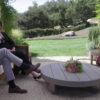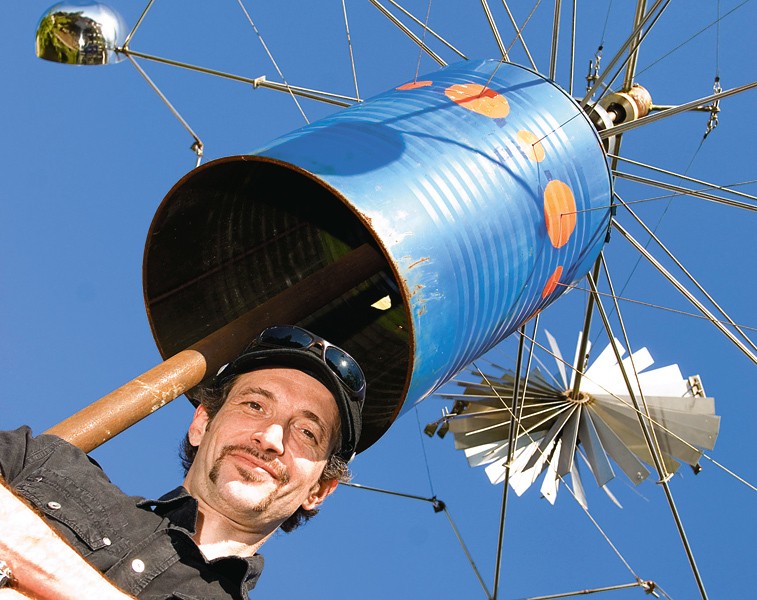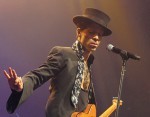Primož Oberžan comes from Laško, but has become a die-hard Šiškar from Ljubljana. The thirty-seven-year-old has been exploring sound and rhythmic laws for two decades in a slightly more unconventional way. He tried his hand at hard core music and all the way to industrial. He founded the group The Stroj, whose leader is already...
Primož Oberžan comes from Laško, but has become a die-hard Šiškar from Ljubljana. The thirty-seven-year-old has been exploring sound and rhythmic laws for two decades in a slightly more unconventional way. He tried his hand at hard core music and all the way to industrial. He founded the group The Stroj, whose leader he has been for many years. He wanted to create a synergy of physical drumming strength and heart. He creates music from sounds that many people see as noise, while he sees the beauty of rhythm in all its primal nature.
How would you explain to a layman what industrial music is?
Industrial is an established term for avant-garde or alternative music that appeared in the 1980s. This type of genre relied on the tradition of punk and its destructive element, on the other hand, it flirted with incorporating sounds from the urban and industrial environment into the instrumentation. A large part of the inspiration for industrial was drawn from futurism, which appeared in the early 1920s. At that time, the initial concepts for this kind of music were created, but the time was not yet technologically mature enough for this music to develop in full swing. Industrial music reached its peak only fifty to sixty years after its conceptual origin.
For many, your music making is noise. What do you have to say to such people?
I partly agree with that. I see my creation as a poetic articulation of noise. The basis from which I always start are non-musical sounds. Most people nowadays are concentrated in urban centers where we are surrounded by noise every day. I live right next to Celovška cesta, which is a big generator of city noise. Noise thus became the natural sound state of the world. My music is a creative reaction to noise. Silence is more of an exception today and is becoming a very special experience. I believe that anyone who doesn't learn to dance to noise will go crazy with noise.
How is music made from noise?
Very different, but always following the same principle: I don't know what I'm looking for, but I know I'll find it! I trust my instincts and always pay attention to everything around me, both with my eyes and ears. Sometimes I start from an unusual object that I see and develop into an instrument. Then I learn to use it and develop some musical phrases that this instrument can produce. I then use them in my creation. I try to place the sound of the new instrument meaningfully and rhythmically in some musical story that I want to tell. Sometimes I am inspired by a field recording (raindrops falling on a gutter, closing a garbage can, ...), which I sound-process. It becomes the "word" of my musical language. This is how I compose sentences and sentences, which are subsequently transformed into music that appeals to everyone in their own way.
Garbage for some, an invaluable instrument for others. Which musical instrument surprised you the most and why?
The last musical instrument you make excites you the most. In the beginning, these were percussion instruments, which we made mostly from waste materials with the intention that people would recognize their original purpose in them. So we did not remove warning labels from barrels etc. Now I have taken a step forward. I changed the aesthetics of the instruments. It's not so much about recycling anymore, because I approach things more structurally, almost sculpturally. I give the instruments an appearance that is in keeping with their purpose, but it is still more than obvious that they are made of non-musical materials. My latest creation is an effector. This is a sound board. On a wooden board equipped with pickups or sensors that catch sound, I attached a whole series of objects that are slowly disappearing from our everyday life, but were very important in the twentieth century, part of the everyday culture of that time. So, it has an analog telephone, a typewriter, part of a spinning machine, springs, etc. The sounds of these objects are familiar to us, but we do not associate them with the object at first hearing. A typewriter can be a great rhythmic instrument, while I can use a telephone as a melodic instrument, etc. I have been using the effector a lot lately, as it is very compatible with the rest of the rhythmic structures and sounds I work with. In our music, which is very loud and powerful, I wanted to incorporate sounds that are quite quiet in nature compared to drumming. If quieter sounds are sovereignly placed next to a louder rhythm, we can add a new dimension to the music.
You organize music workshops for both older and younger people. How do people respond to this kind of music education?
The reactions are very different, but always positive. What I want to teach the participants of my workshops is to walk in the world with open ears. I believe that this is the first condition for understanding and enjoying music. We must be aware of what we hear. I don't want to dictate to people what they should hear, I just want to remind them of all the sound possibilities that are around us. Another thing I want to bring to them is rhythm. Rhythm holds the universe together and is all around us. One of the most productive entry points into music making is through rhythm. Africans, Asians have known this for centuries... We Europeans encountered this kind of rhythmic complexity rather late. In the workshops, I try to combine the art of listening and rhythmic skills.
Which concert was the most memorable for you and why?
We have worked on very different projects, big and a little less big, but each one is memorable in its own way. I will highlight a few performances that I believe were groundbreaking for a certain creative period. The concerts in the quarry Rečica pri Laškem, where we had large amounts of gasoline and the incredible ambiance of the rocks in the quarry, marked a certain segment of our musical development. Even the concerts at the Railway Museum in Ljubljana left an indelible mark on all the people who experienced and heard them live. The concert at the Šiška Cinema last December encompassed the entire creative process of the last three years. There was no fire, there were no megalomaniacal constructions, but there was kymatics. Direct material visualization of our music. A big projection and brand new musical material that is a bit different from the previous one.





